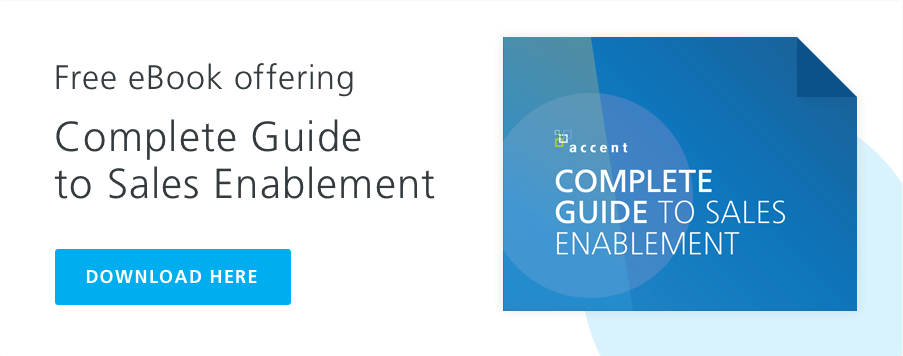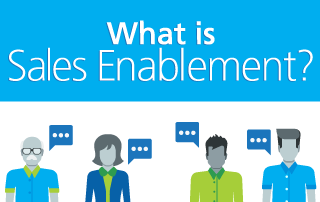sales-enablement
Building Your Sales Communication Plan
When you think about communications and sales, we often think about reaching customers.
What is Sales Communication?
Before we dive into the nuts and bolts of building a sales communication strategy, let’s first define what sales communication is.
Sales communication is the process of sharing information that keeps customers (or your sales team) informed about products, analytics, and important industry news.
A good sales communication program will have two focuses:
The first is a customer focus. This is how your sales team interacts with current and future customers.
The second is an internal focus. This centers on how they communicate within the sales team and the company at large.
For this article, we’ll be focusing on how to improve your internal sales communication strategy so that your sales team gets the information they need without wasting time on things that they don’t.
Why Does Sales Communication Matter?
Implementing an effective sales communication strategy is important because it provides a way for you to keep your sales reps informed about product changes, news, trends in your industry, and a myriad number of other things.
The key, as mentioned earlier, is to present the important information your team needs to know in a way that doesn’t waste their time.
A good sales communication strategy will not only save your team time by distilling information down to only the most necessary components, but will also help eliminate the time spent going to find information for themselves.
What you’ll include in your sales communication strategy will vary by company, but it’s important to always have an overarching strategy in place with clear goals. With those goals in mind, you’ll be better able to guarantee that each thing you share with your team actually helps you meet those goals.
SEE ALSO: Buyer Energy The Real Measurement of Sales Effectiveness

Who is Involved with the Sales Communication Strategy?
When setting up a sales communication strategy, it’s important to clearly assign roles as to who will lead what parts of the communication plan.
Part of what makes the communication strategy effective is creating “gatekeepers” who will serve as intermediaries that vet information for worthiness before passing it along to the team.
Sometimes you will encounter pushback here, as people who’ve previously had a direct connection to the sales team will bristle at having to deal with an intermediary, but setting up these hierarchies is vital to the strategy’s success.
There will, of course, be times where communications go around these gatekeepers. For instance, there will be instances where upper management will contact the team directly with some pressing issue. You should also allow for product managers and other partners to occasionally circumnavigate the vetting process.
When you do encounter pushback, it’s best to simply outline why the sales communication strategy is in place – to ensure that sales team members are given information in a way where they can easily internalize it without overwhelming them in the process.
When Does Sales Communication Happen?
The simple answer here is “it depends.”
Determining when sales communication happens will vary by the individual business and their needs. A good communication strategy will be multifaceted and have daily, weekly, monthly, quarterly, and yearly plans in place.
Let’s break down each timeframe.
Daily
Daily communication is often conducted through email. What you choose to communicate on a daily basis will depend on your objectives, but it’s often a mix of pressing product information, details about customers and suppliers, and things of that nature. The biggest issue with email communication is that it’s easily ignored. We all get huge amounts of email each day and there’s no easy way to delineate which emails have items that are high priority and which can be addressed at a later date.
Despite that issue, this is still a valuable tool.
Weekly
For weekly communication, most companies rely on an in-person meeting. The weekly sales meeting has become a staple for most businesses, as it allows the team to gather together and get the most relevant new information firsthand.
Weekly meetings are a great place to discuss pipeline health, big industry news, celebrate big wins, and even host guest speakers.
The challenges of the weekly meeting are that they take up your sales reps’ time – time they could be working on selling. Beyond that, sales team members who aren’t in the office will miss out on these events.
Monthly
In some companies, there will also be a monthly or quarterly meeting. However, a better solution might involve providing video training materials and the like for your team. These can be viewed at the team member’s leisure, but can still provide valuable information.
Quarterly
Generally speaking, this is another meeting. However, unlike the weekly meeting, the quarterly meeting often takes a look at the bigger picture, highlighting wins and losses in relation to annual goals, while also highlighting things to achieve on the road ahead.
Interestingly enough, podcasts are becoming more popular as a quarterly communication strategy as well. Team members can then listen to a quarterly breakdown like they’d get in a meeting, but without having to actually go to a meeting.
Yearly
There’s no hard and fast rule for how you should communicate annually. There’s often another meeting here, but how you choose to deliver the information is less important than the information itself.
Generally speaking, the yearly communication will be about setting quotas, goals, payment plans, and so on.
The key here is to choose a delivery message for your message that allows for discussion from all the affected parties.

Sales Communication Delivery Methods
Now that we know the different timeframes for sales communication, let’s talk about the various delivery methods you’ll use to ensure your information reaches your team.
It goes without saying that in some instances urgency will dictate what delivery method you use. However, for general purposes, you can use the following depending on what type of message you’re looking to convey.
Email Newsletter
By far the most common method of sales communication (outside of the weekly sales meeting and general emails) is the email newsletter. These can be scheduled for weekly or biweekly and are a great way to deliver updates that aren’t urgent.
Creating an email newsletter will take some coordination, including scheduling so pertinent info is in before deadline, and design so that it’s easily readable by your team.
Web Conference
During the pandemic, web conferencing has become the go-to way for teams to meet while people work from their home offices.
How you decide to present a web conference is up to you. Options include running it like a regular meeting, only without everyone being in the same room, or creating the equivalent of a produced show that follows a specific format.
Whichever method you choose, web conferencing can be a great way to communicate important information with more urgency than an email or newsletter.
Internal Social Platforms
By this point, we’re guessing everyone is familiar with apps like Slack.
These social platforms are an easy way to disseminate information – from traditional things your team needs to know on a daily basis, to more urgent things that have to be communicated quickly.
Beyond that, they’re also a great way to keep your team connected and build camaraderie.
Sales Managers
While all of these methods provide great ways to communicate with your team, don’t forget about the power of face-to-face interactions.
Sales managers should be regularly meeting with their teams — both in group meetings and one on one sessions – to share important information and for general “what challenges are you facing?” discussions.
How to Create a Sales Communication Strategy
Now that we understand the nuts and bolts of how a sales communication strategy works and the importance of having one, let’s discuss how to build your strategy step-by-step.
Following these guidelines will help you implement a communication plan that keeps your team informed without wasting their time with a bunch of unnecessary noise.
1. Determine Your Company Objectives
The first step to creating a communication strategy involves figuring out what company objectives your communication strategy needs to achieve.
It seems crazy to think that companies would implement big changes in how they do things without first figuring out what the goals are, but this happens regularly in the business world.
Avoid potential headaches by taking the time at the beginning to clearly define what the goals of your sales communication strategy are. Knowing what you’re trying to achieve will give you a better picture of what success looks like and how you’ll determine if things are working or not.
One great way to set your objectives involves using the SMART method.
With this approach, you’ll set goals and objectives that are:
- Specific
- Measurable
- Attainable
- Realistic
- Time-bound
Spend some time determining your goals. This is step a lot of people gloss over, but if you do the work here, creating the rest of your sales communication strategy will be much easier.
2. Determine Your Communication Objectives
Once you’ve got the big picture objectives in focus, it’s time to start thinking about your specific communication objectives.
The obvious goal of any communication strategy is to better disseminate information to your sales team, but don’t stop there. Drill down and figure out what the problems are with your current communication strategy and determine how to fix them.
Like the first step, this is another really important part of developing your strategy. If you’re really feeling ambitious, this is a great time to come up with a two-pronged approach: a plan for communicating more effectively with your team, and a plan to coordinate how you can better reach your customers.

3. Run Your Plan Through a SWOT Analysis
Now that you have the objectives defined, you’ve undoubtedly come up with ideas for your communication strategy.
Before you run with those, put them to the test with a SWOT analysis.
SWOT stands for Strengths, Weaknesses, Opportunities, and Threats.
Taking the time to figure out the SWOT elements of your plan can help you spot problems before they happen. It will also allow you to find your strengths and expand upon them. Plus, you might find opportunities you would have otherwise missed.
We’re firm believers in the value of the SWOT analysis. Running your strategy through this process can only make it better.
4. Research!
Honestly, this step is probably more important when crafting a communication strategy that focuses on reaching your customers than it is as far as internal contacts are concerned.
However, research can benefit you internally by examining how other companies run their own communication strategy. Success leaves clues – so if you can glean how some of the biggest companies out there keep their sales teams informed without overwhelming them with information, you can borrow and modify those same principles.
Worst-case scenario, research will give you insight and ideas on what has worked for other teams that you can build on. Best-case scenario, it’s a full template for how to build your own sales communication strategy.
SEE ALSO: Persuasive Language Patterns in Sales

5. Implement Your Strategy
With your strategy created, analyzed, and researched, it’s time to put it into action.
Whether you gradually roll out your new plan or go all in from day one is up to you (we like the idea of going all in – it’s the easiest way to see how everything works in the shortest amount of time).
With the plan in motion, ask for feedback from the team. Are there things they love? Things they hate? Things that could improve? All of these insights are important. After all, if the people who the strategy is designed to help don’t find it useful, it’s a waste of time and resources.
Once some time has passed, you’ll want to take all of these insights and your data and start to evaluate what’s working and what isn’t.
If you can fix the problems, do so. If you can build on what’s working, you’ll want to do that too. The communication strategy is malleable at this point – finding what works and adjusting what doesn’t is the key to really making the strategy work.
Many organizations find that utilizing a sales enablement platform to centralize sales communications and collateral (both internal and external) is critical to aligning departments and working together as a revenue team. If you’re ready to start exploring sales enablement solutions and strategies, check out our guide for beginners below.
Final Thoughts
The value of an effective sales communication strategy cannot be overstated. Your sales team (and your customers) are bombarded with things vying for their attention. Make sure they’re focused on the most important things by eliminating all the extraneous noise.
Building a great sales communication strategy takes some time and effort, but the results are worth it. Following the steps in this article will help you not only figure out what you’re trying to achieve with your new communication plan, but what success will look like, how to build the plan, and how to refine it as you go.
The effort here will be rewarded – a good sales communication strategy will help keep your team informed, up to date on the latest news and industry trends, provide opportunities for learning and development, and build team camaraderie.
Whether you’re setting up your first sales communication strategy, or your have one that could use an overhaul, not streamlining your process means not only are your team members missing out on important communications, but you’re potentially losing out on sales and revenue as well. That’s something no company wants to experience.
Want to learn more about sales enablement, marketing, and how to build the most effectives sales teams around? Then be sure to subscribe to our blog so you don’t miss our latest posts!
Accent Technologies is the first and only SaaS company to bring together Sales AI and Content Management in a true Revenue Enablement Platform. We provide both sales and marketing with better visibility into the performance of their teams. This drives revenue through intelligent recommendations for complex sales scenarios and provides the data for rich analytics that power better coaching, forecasting, and long-term customer support. Learn more about our solutions or request a live demo to see it in action.
By Accent Technologies
9th February 2021
Sales Communication the Accent Way
Imagine not only knowing what you’re most effective channels or campaigns are, but being able to analyze each and every sales activity and it’s direct impact on the buyer’s engagement.
Buyer Energy is the a critical factor to include when evaluating the effectiveness of your sellers (and collateral). But it is also a pivotal insight to track for future strategy.
Contact us today to learn more about how we leverage sales AI to help you build a data-driven sale communication strategy that moves the needle with buyers.












